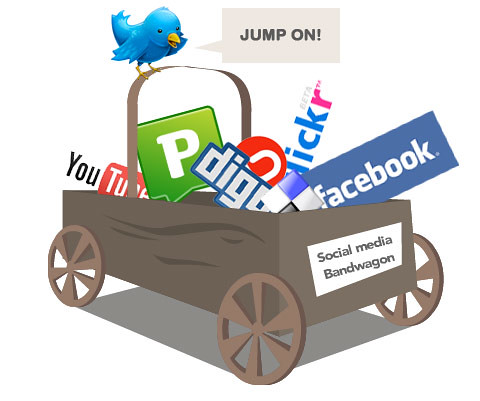 I spent some time today exploring Social Software in the eLearning Tool Kit. I chose to look at four educational sites that I would use: Edmodo, GlogsterEdu, Wikispaces and Google for Education. All sites made it very clear right at the beginning, and often in CAPITAL letters, that they were not responsible for just about everything including copyright violations, and the actions of third parties connected by links into their sites. A disclaimer at the beginning of each Term of Service (TOS) stated that they retained the right to modify terms at any time.
I spent some time today exploring Social Software in the eLearning Tool Kit. I chose to look at four educational sites that I would use: Edmodo, GlogsterEdu, Wikispaces and Google for Education. All sites made it very clear right at the beginning, and often in CAPITAL letters, that they were not responsible for just about everything including copyright violations, and the actions of third parties connected by links into their sites. A disclaimer at the beginning of each Term of Service (TOS) stated that they retained the right to modify terms at any time.
Two out the four (Wikispaces and Google) stated very clearly that the user owned the content uploaded. All retained the rights though to use and modify content. Most of their use was in connection to improving their services. Only GlogsterEdu stated that they would gain permission from the user first, but they claimed the right to use discussion forum content without express permission. Of the four, only Glogster specifically stated where its servers were located: Canada.
Privacy and security issues generated much content for each of the sites. The three focused on education had policies concerning children under 13. All offered the choice of varying levels of privacy, but no liability if anything went wrong. One specifically stated that if it found that it had inadvertently stored a child’s information then it would delete it as quickly as possible. What was surprising to me was that a child was defined as 13 and under.
This exploration has given my some reason to pause in my use of technology with students. As a teacher I get excited about using technology in the classroom and usually don’t think about the Terms of Service (TOS). In fact, if I’m truthful, I’m not in the habit of reading these before I sign up for most things. I usually just click “yes” and treat them much like I do the safety demonstration on an airplane: you know its necessary, but will deal with it when something happens. As a teacher, I have a responsibility to make sure that I protect my students and comply with the law in relation to them. Only Edmodo specifically addressed my responsibility, although that could be because it is specifically designed for school use.
Privacy is always my biggest concern. Each of the sites offered some way to keep a class private although there were disclaimers. In the end the responsibility really rests on the teacher to train the students in good security habits, and to monitor their interaction as much as possible to ensure safety. At the elementary level, I am most concerned that what I use acts as a sheltered place that has some boundaries. I know there is debate about allowing students to interact with the world-at-large. It is perhaps a more authentic environment, but young children are not capable of dealing with some of the things that they might encounter. It is true that they may not get the full benefit of the connecting capabilities of these social software tools, but I think that being exposed to them within a safe environment is a way to scaffold them for growth and confidence in Web 2.0 learning opportunities. In the future, I will pay more attention to a TOS and school/government policy before involving my students.

It’s a very worthwhile activity, isn’t it? Most folks aren’t familiar with TOS–they click Agree without reading them (me too).